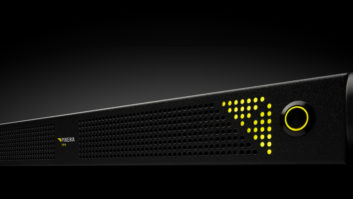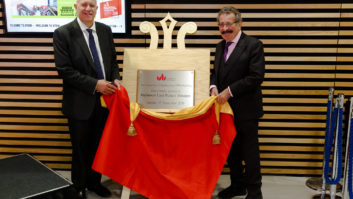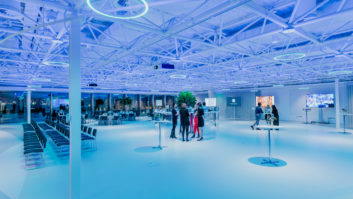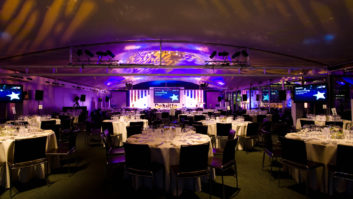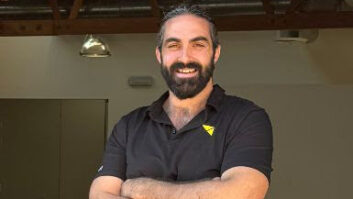AV Stumpfl’s media server platform, PIXERA, powered a recent production of composer Richard Strauss’s one-act opera Elektra at the Festspielhaus Baden-Baden, which has a capacity of 2,500, making it Germany’s largest venue of its kind. PIXERA streamlined the show’s production process, accommodating over 1,000 video cues and integrating live animation with pre-programmed sequences.
Directed by Philipp Stölzl and Philipp M. Krenn the show required advanced projection capabilities due to its kinetic staging with complex movements and intricate visual demands.
 Judith Selenko and Peter Venus, the masterminds behind the technical and creative visual elements, constructed a 1:25 scale model of the stage which allowed them to work with precision. The stage, designed by Stölzl and Hahn, consisted of movable steps, stairs and drawers with the text of Hugo von Hofmannstahl’s Elektra libretto projected onto the stage and its backdrop.
Judith Selenko and Peter Venus, the masterminds behind the technical and creative visual elements, constructed a 1:25 scale model of the stage which allowed them to work with precision. The stage, designed by Stölzl and Hahn, consisted of movable steps, stairs and drawers with the text of Hugo von Hofmannstahl’s Elektra libretto projected onto the stage and its backdrop.
The first projection tests were done with the original model created by the set designers. But, after that, Selenko said PIXERA’s capabilities were instrumental in visualising and adjusting designs during the rehearsals.
Selenko said: “PIXERA’s ability to handle complex data with ease and its powerful animation features were crucial in bringing our vision to life.”
Venus highlighted the importance of the pre-programming and visualisation: “Without pre-programming, nothing would have worked. Our show had over 1,000 video cues, which we set and then adjusted in rehearsals,” he added.
This combination of automated and manual adjustments ensured the visual elements were perfectly in synch with the live performance, respecting the actors’ timing in the show.
Venus added: “My first big show programmed with PIXERA presented unique technical requirements. The kinetic stage elements needed precise and responsive control, which PIXERA’s Posi Stage Net data connection facilitated seamlessly. This enabled us to control all elements individually and in groups, adapting in real-time to the stage dynamics.”
The idea of putting the libretto text in the background came from Philipp Stölzl. And the typeface was designed by Selenko, with each scene having its own typeface concept. Selenko and Venus implemented the entire libretto as graphics and text, making it easy for them to concentrate on the content. The pair felt the main challenge was finding the balance of not continuously animating for one and a half hours, given that musicians have varying timings.
Venus explained: “There are passages that are pre-programmed and then we have animations that are done live. We have the material in PIXERA and we can position it in a free space and can enlarge it by 50 percent at the same time.”
The volume of video content in the show was another challenge, involving precise cue naming and assistance of a dramaturge.
Venus concluded: “Constant collaboration with the director was crucial, allowing us to explore all possibilities on a smaller scale before final implementation.”
